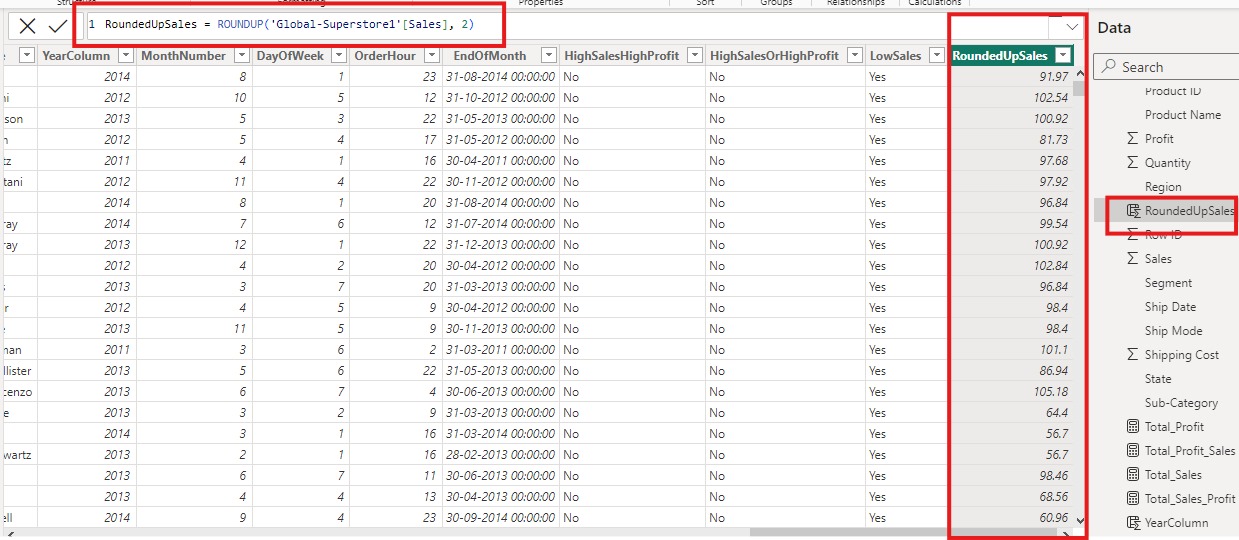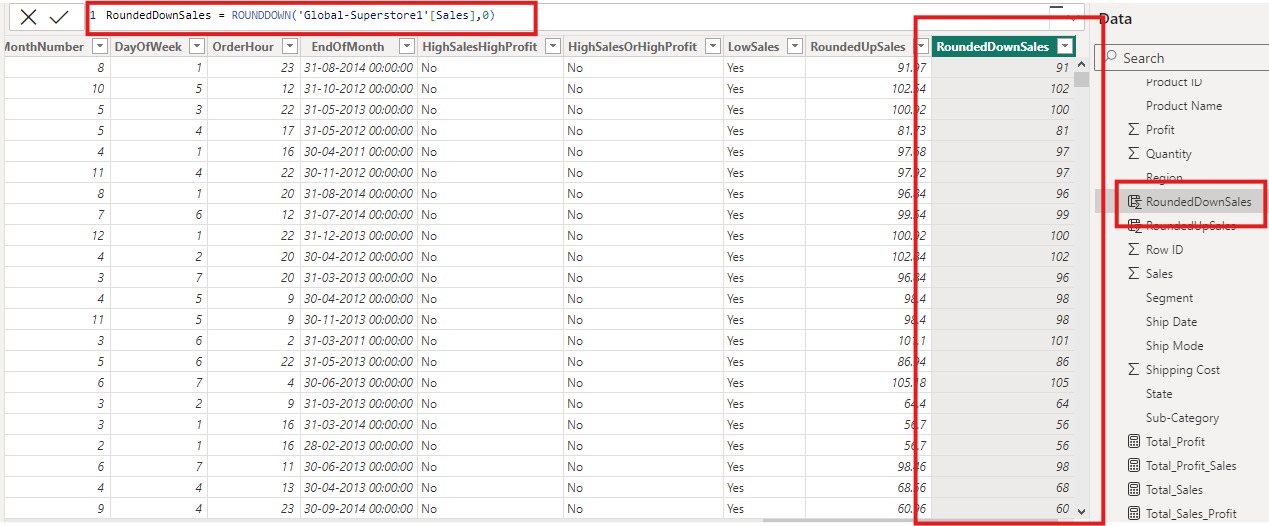
Achieving Precision in Power BI: Using ROUND, ROUNDUP, and ROUNDDOWN
Jul 31, 2024
Achieving Precision in Power
BI: Using ROUND, ROUNDUP, and ROUNDDOWN
In today's blog post,I’ll delve into the essential
rounding functions available in Power BI. Rounding functions are crucial for
ensuring data accuracy and consistency, particularly when dealing with
financial figures, discounts, tax rates, and other numerical data. We will explore
the ROUND, ROUNDUP, and ROUNDDOWN functions, understanding their syntax, use
cases, and practical applications. By mastering these functions, you can
enhance your data analysis and reporting capabilities, ensuring precise data
representation in your Power BI dashboards and reports.
When working with numerical data in Power BI, rounding
functions are essential for precise data representation and calculations. In
this blog, we'll explore the ROUND, ROUNDUP, and ROUNDDOWN functions, including
their syntax, use cases, and examples.
Understanding the ROUND
Function
The ROUND function rounds a number to a specified number
of digits. It's useful when you need to control the precision of your data.
Syntax:

- number:
The number you want to round.
- num_digits:
The number of digits to which you want to round the number.
Example:
Let's say you have a column named SalesAmount with
values like 123.456. To round this value to 2 decimal places, you can use:
ROUND(SalesAmount, 2)
Use Case:
Rounding sales figures to two decimal places for
accurate financial reporting.
Understanding the ROUNDUP
Function
The ROUNDUP function always rounds a number up, away
from zero. This function ensures that your values are rounded up regardless of
the decimal part.
Syntax:

number: The number you want to round up.
num_digits: The number of digits to which
you want to round the number up.
Example:
If you have a column named Discount with values like 12.345,
and you want to round this up to 1 decimal place, you can use:
ROUNDUP(Discount, 1)
Use Case:
Rounding up discounts to ensure customers always get at
least a minimum discount.
Illustrative Example of ROUNDUP Function 
Understanding the ROUNDDOWN Function
The ROUNDDOWN function always rounds a number down,
towards zero. This function ensures that your values are rounded down
regardless of the decimal part.
Syntax:

number: The number you want to round down.
num_digits: The number of digits to which
you want to round the number down.
Example:
If you have a column named TaxRate with values like 5.678,
and you want to round this down to 2 decimal places, you can use:
ROUNDDOWN(TaxRate, 2)
Use Case:
Rounding down tax rates to avoid overestimation in
financial projections.
Practical Examples with Global
Super Store Data
Let's apply these functions to the Global Super Store
dataset.
ROUND Example:
Suppose we want to round the Profit column to 0 decimal
places.
Profit_Rounded = ROUND(GlobalSuperStore[Profit], 0)
ROUNDUP Example:
Suppose we want to round up the Shipping Cost column to
the nearest integer.
ShippingCost_RoundedUp =
ROUNDUP(GlobalSuperStore[Shipping Cost], 0)
ROUNDDOWN Example:
Suppose we want to round down the Discount column to 1
decimal place.
Discount_RoundedDown =
ROUNDDOWN(GlobalSuperStore[Discount], 1)
Visualizing the Results
To visualize the effects of these rounding functions,
you can create a table in Power BI that includes the original and rounded
columns. This helps to see the differences clearly and understand the impact of
each function.
Illustrative Example of ROUNDDOWN
Function

Conclusion
Rounding functions in Power BI are crucial for ensuring
data accuracy and consistency. The ROUND, ROUNDUP, and ROUNDDOWN functions
provide flexibility for various rounding needs, whether you're preparing
financial reports, adjusting discount rates, or managing tax calculations. By
mastering these functions, you can enhance your data analysis and reporting
capabilities in Power BI.
For more detailed guidance and in-depth training, visit
our training
here.

